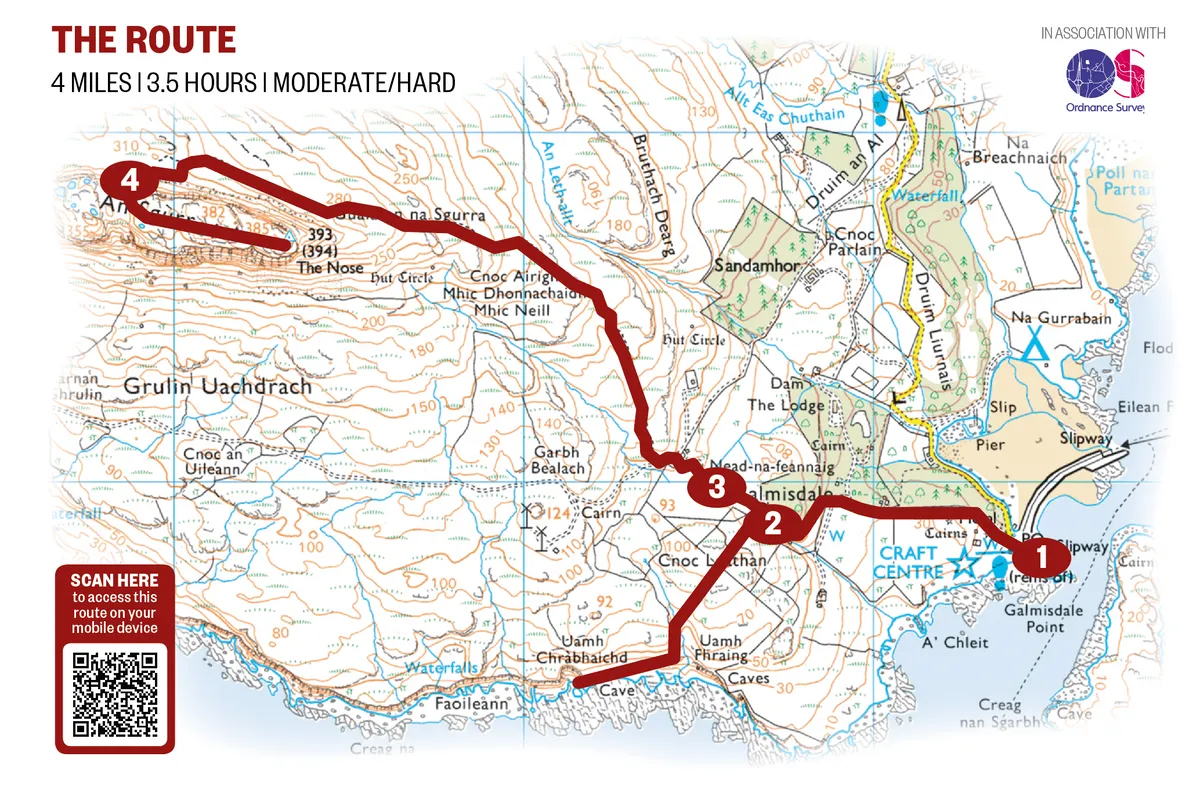Of all the Small Isles, Eigg – pronounced egg – is undoubtedly the most distinctive. The dramatic rocky remains of an old lava flow – An Sgurr – stand proud above the surrounding flatter land, like a whale breaching the ocean.
This towering peak (393m) formed more than 58 million years ago as the lava from a large volcanic eruption cooled within a riverbed. Over the millennia that followed, the softer basalt rock that edged the hardened pitchstone eroded away, leaving behind an impressive craggy fin.
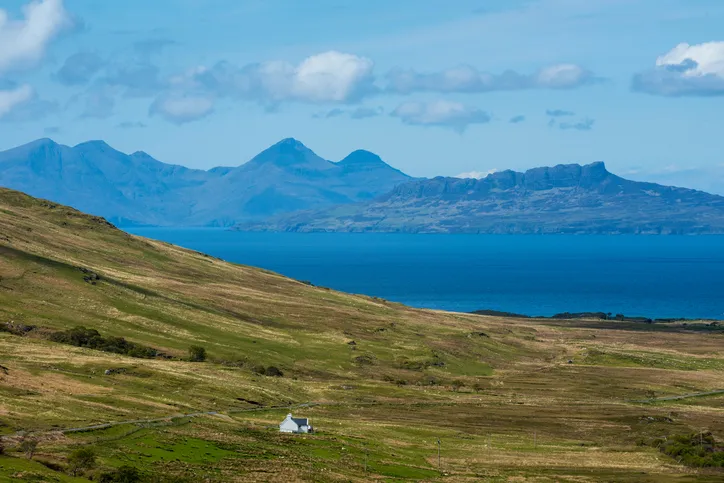
History of Eigg
It’s not just the geological past of the island that is explosive. Evidence of human inhabitation in the Mesolithic, New Stone Age, Bronze Age and Iron Age can be found, some of which dates back more than 8,000 years. There is also proof of 9th-century Viking landings in the form of sword-handles and longship remains.
But perhaps most famous were the clan of MacDonald. For 400 years the island was their home, until 1577 when, according to tradition, rival clan the MacLeods came to Eigg in search of revenge. Hiding in a cave for three long days, the residents were finally found, just as the MacLeods were about to give up. Sealing the entrance, the invaders set the cave alight, killing all 395 souls inside.
Related articles
Croft clearances
Years later, in the 18th century, crofting took hold on the island, with many habitants claiming areas of land to harvest kelp – the remains of one such farm, Grulin, can be found on the south side of An Sgurr. That was, at least, until the infamous Clearances of the 19th century, when the crofters were removed to make way for more profitable sheep farming.
Britain's most environmentally friendly island
Building a reputation as Britain’s most eco-friendly island doesn’t happen overnight. In fact, it has taken the Isle of Eigg over 20 years.
Eigg residents were Scotland’s first to complete an island buy-out in 1997 and pioneered a green-energy scheme combining water, solar and wind to supply around 95% of the island’s electricity needs. Eigg Electric is part of the community-owned Isle of Eigg Heritage Trust, which has responsibility for stewardship of the island and for supporting future development.
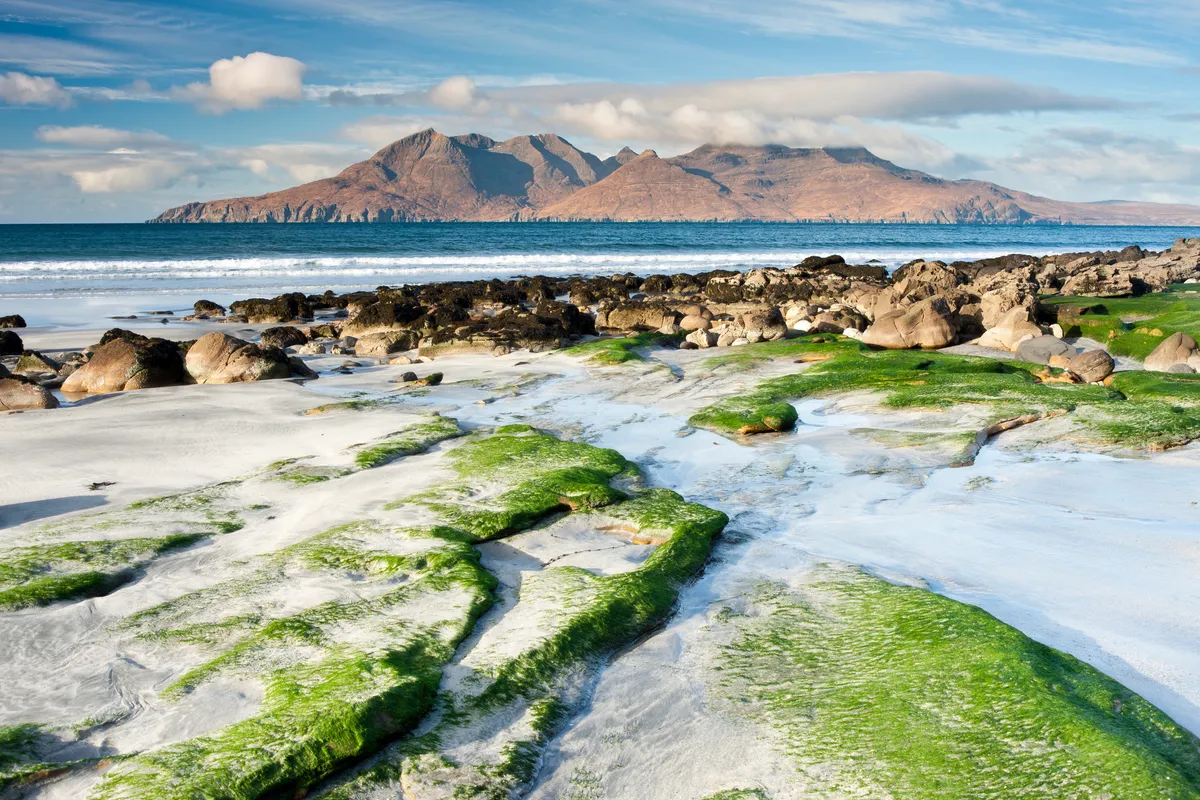
At the heart of this success is community and a shared love of Eigg. Low-impact lifestyles are part of the local psyche. Many islanders grow their own fruit and veg, and a programme of woodland planting ensures a sustainable source of wood for heating. Eigg Primary is part of the ‘Eco-school’ scheme, and only residents and registered disabled users can bring a vehicle on to the island. Every adult is automatically a member of the residents’ association, which recently turned down an application for a fish farm off the north end of the island because of its potential negative impact on the marine environment.
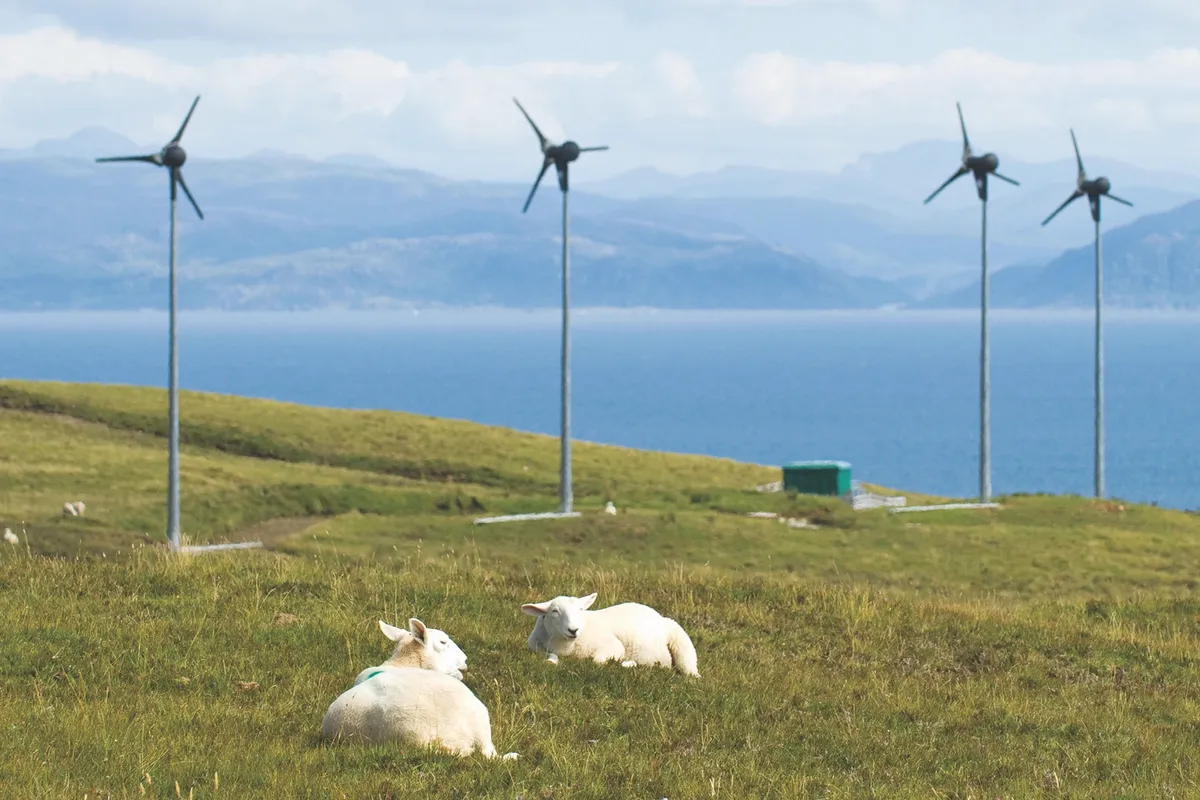
There are challenges, of course. Electricity usage is limited to 5kW per house at any one time – that’s enough for a kettle and washing machine – and the limits of the grid restrict development and, therefore, population growth. Since building the pier centre 20 years ago, visitor numbers have doubled, so a new building is now required.
And transport in general can be tricky, especially with ferry cancellations in winter. However, the increase in visitor numbers has resulted in a greater range of accommodation, most of it detailed on the trust’s website. If you fancy visiting, ferries run from Mallaig all year and from Arisaig, late-April to September. isleofeigg.org
Art on Eigg
Nowadays, it’s crafters – as well as crofters – who live and work here, performing cèilidhs, hosting artists and running workshops.
Wildlife on Eigg
Visitors to the island can also enjoy wildlife watching and walking, too. Spring is a particularly good time for hiking, thanks to the island’s 500 plant species, including bluebells, wild garlic, primroses and 12 different species of orchid.
Keep an eye on the water for porpoises and, from June to September, minke whales, orcas and basking sharks. May is a great time for native white-tailed and golden eagles, along with visiting cuckoos, willow warblers and twites – just a handful of the island’s 212 bird species.
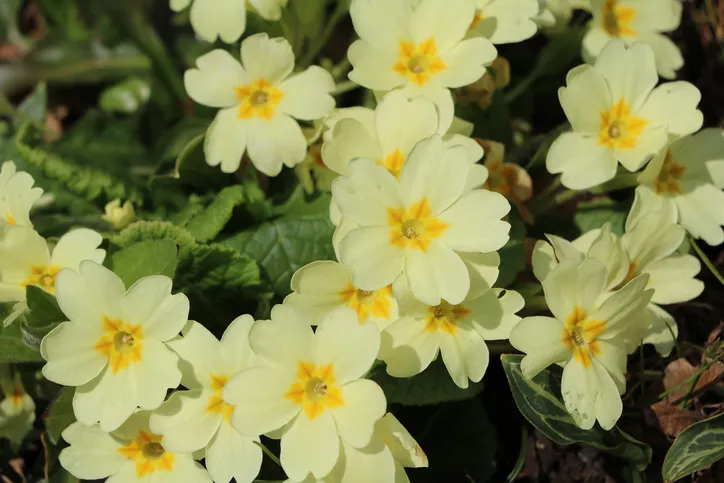
How to get to Eigg
To get to the Isle of Eigg, visitors must use a ferry. Caledonian Macbrayne, the Small Isles ferry service, operates all year round between Mallaig and Eigg, Muck, Rum and Canna. www.calmac.co.uk
From late April to September, Arisaig Marine offers visitors a second option between Arisaig to Eigg. arisaig.co.uk
Visitors are not permitted to bring their own vehicles to the island.
Find out more at isleofeigg.org/travel
Eigg walking route
A Small Isle it may be but, when it comes to history and wildlife, Eigg is anything but. Discover it on foot with this four-mile walk.
1. Wending west
From the ferry, take the road uphill, leaving it soon after to the left. Pass the Community Hall on your right to go through a gate, heading for An Sgurr and the little house that sits beneath it.
2. Caves by the waves
If you want to see Massacre Caves (it has to be low tide), look for purple waymarkers on your left. Follow them to pass in front of a house and you’ll begin to see views of the lighthouse. At the fork, turn right, then go through a kissing gate. Cross a field and head through another gate, taking a path down to the shore.
A little way along you’ll see the entrance to Cathedral Cave, where Catholic Mass was held. Continue on to find the smaller entrance to Massacre Cave (due to a recent rockfall, locals advise against entering). From here, retrace your steps back to the main path.
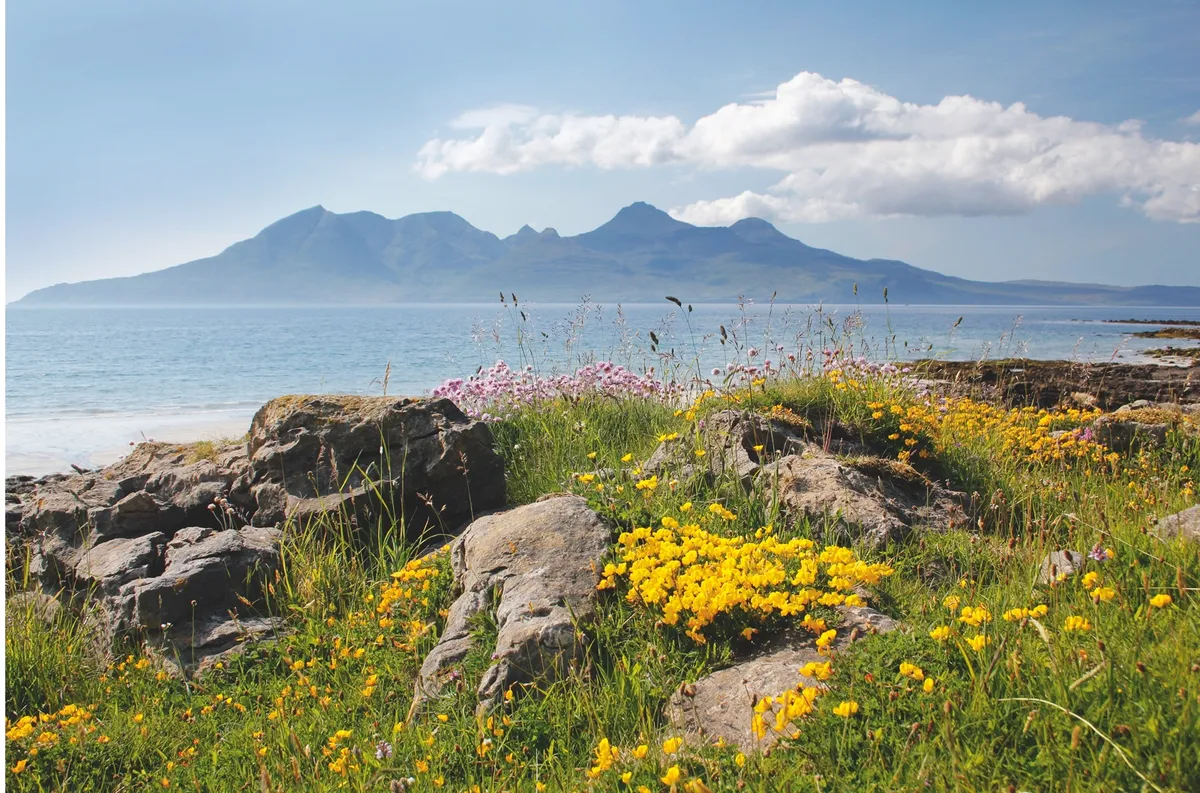
3. Skirting Sgurr
The way turns to the right and goes through a gate, then left to the once-thriving settlement of Grulin. Red waymarkers and small cairns lead you off the track to the right, heading around the north side of An Sgurr’s pitchrock nose.
4. Vantage point
You may decide that the lochans that sit beneath the peak are far enough – and certainly they reward with wide views over to Rum. But if you want a challenge, continue along the cliff to find a marked path on your left. It’s steep and rocky to the summit, though short, and you will need to use your hands – but if you’re going to scramble anywhere, it may as well be on the Isle of Eigg.
Isle of Eigg walking route and map.
